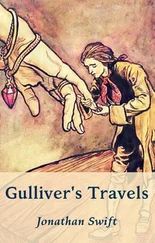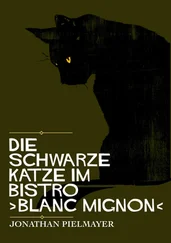The assistant smiled wickedly. “Well, that’s the genius of it, isn’t it? It becomes valuable, it becomes a work of art, simply by virtue of the great effort and expense necessary to maintain it, to keep it intact. A lovely bit of irony. You know, when Guernica last came to this country — in the seventies I think it was? Twenty years ago at least — it was shipped for flight in a special crate which was not only built to withstand the most enormous impact in case the plane crashed but had its own automatically inflated life raft, complete with radio signals and flares.” He laughed. “I find that the most heartwarming story. Though I wonder what the pilot felt about it!”
Suddenly Osbourne was ready to go. Heather, standing a step behind him, looked neither upset nor surprised — apparently she was used to his quick visits. “I’ll talk to Mary this week,” he said. At the door, he kissed her hand.
“It was a pleasure meeting you,” she said to John. “Please come back anytime.” He felt himself reddening.
Back on the landing, Osbourne said nothing to John and skipped down the steps ten feet ahead of him; then he stopped, on the ground floor, and held open the front door. The car was idling at the curb when they emerged from the building. The morning haze had begun to burn off. As they drove, Osbourne fell again into a private, unself-conscious silence, benignly antisocial, though it was clear from his face that his spirits were lifted somehow. John wondered if his boss had just bought anything; he kept waiting for some question about the work they had just seen. He wondered, too, if all the young artists they were visiting that morning would be as comely and familiar as Heather had been. That would explain a few things. Though it would also obscure more than ever Osbourne’s reasons for wanting John there in the first place.
“Pleasant woman,” John said finally. Osbourne just nodded, without any special enthusiasm that John could see.
The second studio they visited was more crowded with outsiders like themselves, though that may have been due merely to the later hour. An extroverted young man with a long goatee met them at the door; John could tell from Osbourne’s reserve that the two had not met before, though the young man behaved as if they knew everything about each other.
“So good to see you, Mal,” he said. “David is overjoyed you could make it.”
David? Osbourne saw the confusion on John’s face as he realized they were in the company of another personal assistant; lagging behind for a moment, he caught John’s gaze and discreetly inclined his head toward a perfectly miserable-looking man in his fifties, bald, sitting across the windowsill with one foot on the fire escape, holding a squeeze bottle of water, looking as if he were about to burst into tears of humiliation and worry. He did not glance their way.
They spent a few minutes circulating through the studio. The assistant stayed out of their sightline but was never more than six feet away. David’s latest work, as they saw, was concerned with the recontextualization of familiar images (whether from the history of art or from contemporary pop culture), shaking them up, violating their accepted meanings through juxtaposition. Some of these wall-mounted works were done with intentional crudity, using just scissors and paste (though one such collage of perhaps a thousand tiny images of celebrities’ faces, almost a pointillist work when seen from across the studio, must have taken a lot of effort); others employed some form of computer-printing technology to make the merger of the images perfectly seamless, as in a giant silkscreen reproduction of Vermeer’s Girl at Her Window holding a Diet Coke, or a photograph of the distinctive geometric patterns of a computer circuit board superimposed over a copy of Constable’s The Hay Wain.
Apparently the assistant didn’t know Osbourne’s reputation well enough not to be agitated by his silence. “David sees this reorientation of images as a way of empowering people,” he whispered to them. “In the age of mechanical reproduction, in a culture that’s absolutely drowning in images, it’s simply hubris to go out and create your own, to add to the static — it’s self-defeating. The only revenge is to appropriate what’s out there for your own purposes, to subvert the corporate mindset that anesthetizes these endless copies. Images, more than reality, are our true environment now, and hasn’t that always been the task of art — to skew representation just enough to get you to look at your environment in a new way?”
Listening to this in the wake of his experience at Heather’s, John understood that he was observing the practice of a specialized profession — the explainer, the pre-critic, whose task was central to the meaning of the work itself and not a commentary on it. In fact, maybe that was where the appeal of art like this — touched, at least, by David’s hands in some cases, but untouched by his own invention — was supposed to lie: in ceding to the interpreter the satisfaction of creation. After a while, John found, you couldn’t even look at these recombined pictures without hearing the goateed assistant’s voice in your head. Personally John didn’t have a lot of patience with this kind of work, but he kept his mouth shut and his expression thoughtful, not knowing how Osbourne felt about it. After all, some of the images drawn from advertising, some of the reproduced text, might even have been his.
“What’s this?” Osbourne said suddenly, pointing to the back of the studio, where several people were gathered. A full-scale reproduction of Rodin’s The Kiss, cast in some sort of lightweight orange polyurethane and evidently hollow, was suspended upside down by what looked like fishing line so that it hung about eight feet off the floor, wavering slightly. The familiar couple looked as though they were holding each other tightly as they plunged to their deaths. To leave the studio by its freight elevator, one had to walk under it.
The assistant looked momentarily embarrassed. “It’s a reappropriation of Auguste Rodin’s The Kiss,” he said, “cast in—”
“No, I can see that,” Osbourne said, a little impatiently. “I mean that notepad there or whatever it is.”
The assistant beamed. John finally noticed a clipboard hung on a nail next to the elevator, underneath the suspended sculpture. “Part of the same piece,” the goateed young man said. “It’s a pad on which visitors, if they’re willing to linger underneath the sculpture itself, answer a series of printed questions about their impressions of the work. It’s really drawing a great deal of positive attention, this piece.”
And suddenly, Osbourne turned to look expectantly at John, the look that had been so long in coming John had stopped waiting for it. Alarmed, he tried to think of something perceptive to say about the upside-down Kiss, something astute but noncommittal. A few seconds crept by.
“Interactivity?” John said. The assistant nodded his head vigorously.
Back in the car, Osbourne appeared bothered by something; he sighed twice and kept tapping his fingertips on the knee of his jeans. John feared of course that the source of this displeasure was himself — that whatever Osbourne’s unfathomable hopes might have been in mandating the companionship of an unknown employee in the first place, they weren’t panning out. But in fairness to himself, John thought, not a word had yet passed between them on the subject of what exactly it was that John was supposed to do, what sort of aid he had been commissioned to provide. His exasperation was that much greater for being, under the circumstances, inexpressible. Another sort of person — Vanessa, certainly, and probably Rebecca as well — would have been indignant or curious or bored enough by this time to ask Osbourne straight out what the deal was; but John found this course of action too confrontational to think about seriously. His demurral went beyond the uncomfortable fact that Osbourne was his superior, with a power over his career which may have been hard to define but couldn’t be entirely discounted; it just wasn’t in John’s makeup to be the one to break the compact of civility, especially not with a virtual stranger.
Читать дальше












